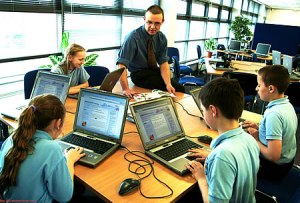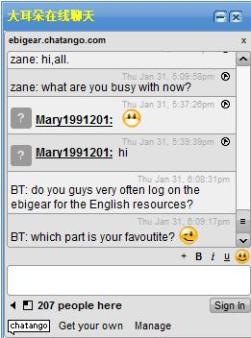As often as language teachers lecture about the importance of continual practice to adolescent learners, the dullness of homework exercises designed primarily to be educational has difficulty competing with popular media designed solely to be entertaining. Recently, numerous attempts have been made to develop “edutainment” titles that seek to merge educational goals with entertainment content; oftentimes, however, they fail to achieve either goal and fall instead into niche markets. Rather than seeing entertainment-focused media forms as adversarial to educational content, educators should instead embrace them. This commentary examines how content originally designed for entertainment purposes can be modified to provide natural and context rich language learning environments, without sacrificing its entertainment value. First, I examine a modification to the number one selling video game The Sims that intelligently combines game data from the English edition with data from editions of other languages to form a bilingual gaming environment. This exposes learners to abundant L2 vocabulary, yet still provides enough L1 support not to detract from the game. This principle is then extended to other applications such as music videos, typing tutors, and voice-navigated games. Finally, areas of otherwise wasted time are identified, such as waiting for Web pages to load or walking to class, with suggestions of how technology can facilitate language learning during these times
Pedagogical Implications
The aforementioned findings and discussion have pedagogical and theoretical implications for language learning and for learning with multimedia in general. Furthermore, they direct our attention to some important designing principles that need to be taken into consideration when developing instructional multimedia materials.
As far as pedagogical implications are concerned, what has been mentioned above constitutes evidence addressing the design of multimedia instruction for second-language learning. Stated more specifically, what has been presented above demonstrates that exposing learners to multiple modalities of presentation (i.e., printed text, sound, picture, or video) produces a language-learning environment which can have a real impact on learning. Another pedagogical implication that can be drawn on the basis of the above findings is that “organizing information in working memory seems to be aided by learners making connections between the verbal and visual system, and this helps in linking information to components of the mental model in long-term memory” (Chun & Plass, 1996, p. 517).
Assuming that students are accustomed to traditional glosses and might not know how other types of glosses foster vocabulary learning, instructors need to spend some time training students to use software in the most beneficial way. Instructors need to explain to the students the efficacy of multimedia annotations in order to ensure that all informational categories available will be consulted by them. Thus, teachers should encourage their learners to exploit the different modalities when looking up the meaning of unfamiliar words. Instructors and program developers should consider including interesting and relevant visual material in their programs in order to increase learners’ motivation to allocate the required mental effort to learn the unknown words.

 F
F
